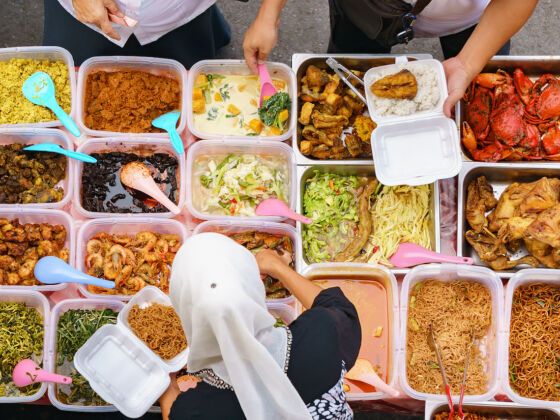Eating is a national pastime in Singapore, but the complex terminology can be daunting for visitors. Here’s a cheat sheet to navigating Singapore’s kopitiam like a pro:
Know your terrain
- Hawker stall: A small stall often operated by a sole owner or small team. Prices are generally affordable with minimal service.
- Coffeeshop / Kopitiam: Also known as kopitiam (pronounced “co-pee-diem”), a coffeeshop is an outlet consisting of a few hawker stalls. Kopitiam is also the name of a local food chain.
- Hawker centre / food centre: A large center that can house between 20 and 50 stalls. Examples include Maxwell Market Food Center and Newton Food Center.
- Food court: Indoor version of food center that usually comes with air-conditioning.
Know your makan basics
Makan is Malay for “to eat,” but is often used to describe food as well. Ordering fried noodles might earn you a blank face in some places, so go colloquial and order mee goreng instead. Goreng, chow, and char all refer to “stir-fry” in various languages.
